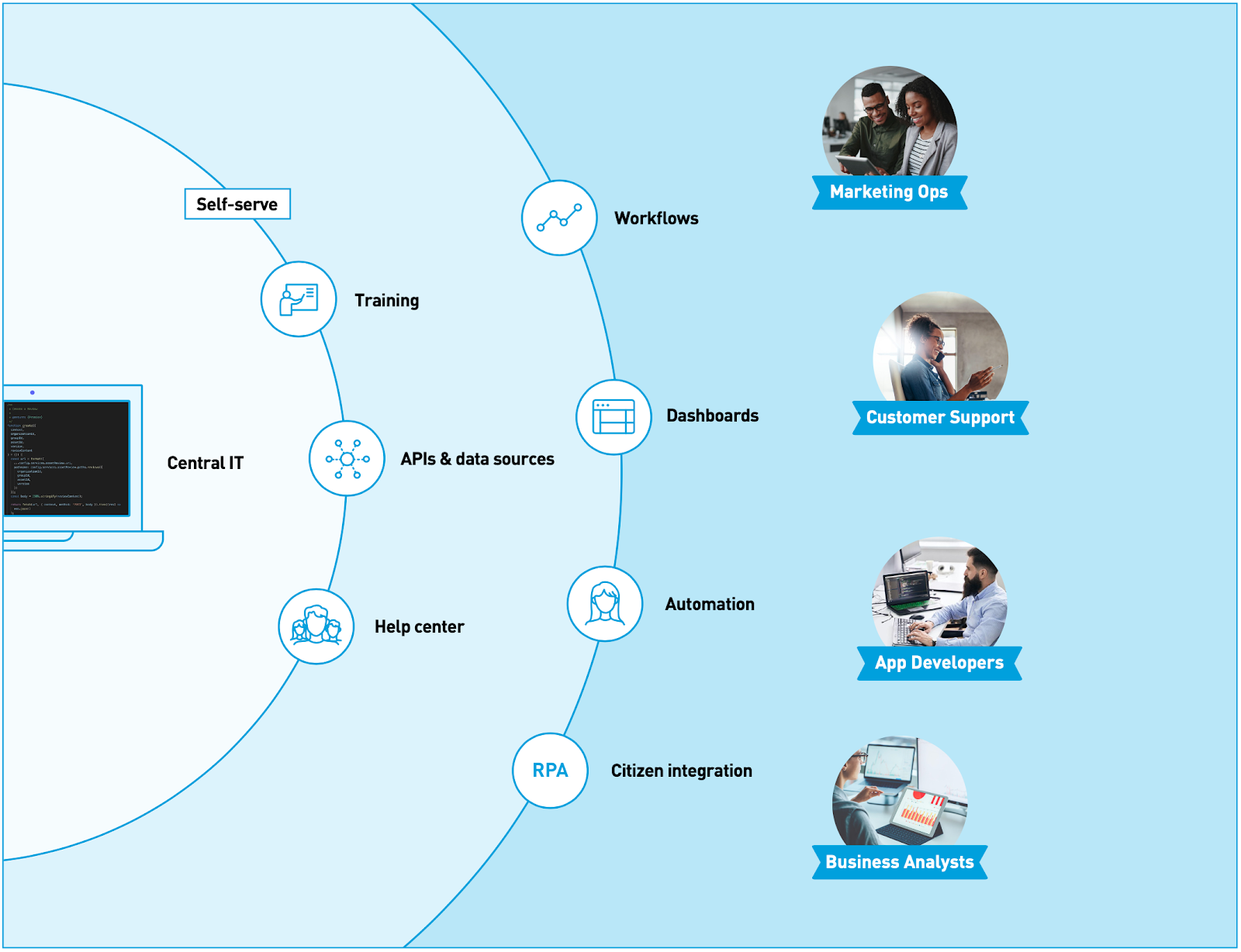The workplace has changed more in 2020 than the past 10 years due to the effects that COVID-19 has had on employees, the workplace, and the economy. It’s clear that organizations must pivot fast to adapt to changing customer needs and the shifting business landscape. You can achieve this level of agility by arming the people within your organization with the right data, digital capabilities, and resources. On top of this, your people must be empowered to build and innovate without the direct help of IT.
Digital is now imperative
While digital transformation has been on every organization’s to-do list, it wasn’t long ago where we saw executives of companies with a differing sense of urgency around their transformations. But digital is now imperative. Every industry is facing sudden and immediate change, and businesses must adapt, fast.
This is an opportunity for IT to lead the way — they must define how the business and IT will work together to transform and lay a foundation for innovation.
Your company needs a new model for innovation
For some right now, innovation might seem like a nice-to-have, but the reality of a changing work environment and evolving consumer behaviors means that nothing works the way it did — innovation is a must. This is business unusual… there is no going back to 2019.
It’s time for IT to become the enabler of innovation. IT teams are the steward of data and digital capabilities and are the key to decentralizing and democratizing innovation. They must make these capabilities available to everyone in the organization and shift to a self-service model.
But moving much of IT to a self-service model is challenging — though it might come as some comfort that this remedy isn’t completely new. Many of our customers have started to successfully make this journey towards self-service.
Unlocking innovation through self-service IT

IT has to change its mindset from the deliverer of projects to the enabler of projects for self-service to work. This means comprehensive online training and first-class help center focused on enablement. The goal needs to be enabling everybody in your company to be more productive and innovative on their own.
Introducing First, break IT 2.0:
Today, you must accelerate your digital transformation not only to survive but ultimately to thrive in the future. CIOs and IT leaders play a critical role in making this happen. With this in mind, I am thrilled to share with you First, break IT 2.0, a brand new eBook I wrote featuring thought leadership by Vala Afshar, Chief Digital Evangelist at Salesforce; David Berlind, Editor-in-Chief of ProgrammableWeb; and Stephen Fishman, RVP of Customer Success at MuleSoft.
Here is a sample of some of the topics covered:
- The role of the CIO has evolved and in order to survive in today’s business world, companies need tech- and business-savvy CIOs to drive strategic initiatives and growth opportunities.
- IT leaders must democratize innovation by unlocking business capabilities and data with APIs for others within the broader organization to innovate on their own.
- Successful digital organizations recognize that APIs grow in value when you create a strategy to connect them to the broader ecosystem.
- API ownership is critical for the long-term success of APIs. Assigning the right owner will drive accelerated project delivery and higher quality.
- Unlocking innovation with API-led connectivity — API-led connectivity liberates resources, enabling innovation and speed.
I’m confident that this eBook will have invaluable resources to help you navigate an ever-changing business landscape and create a future-proof foundation for your organization built for speed and agility.
Download the First, break IT eBook now to learn how to reinvent business with speed and agility.









